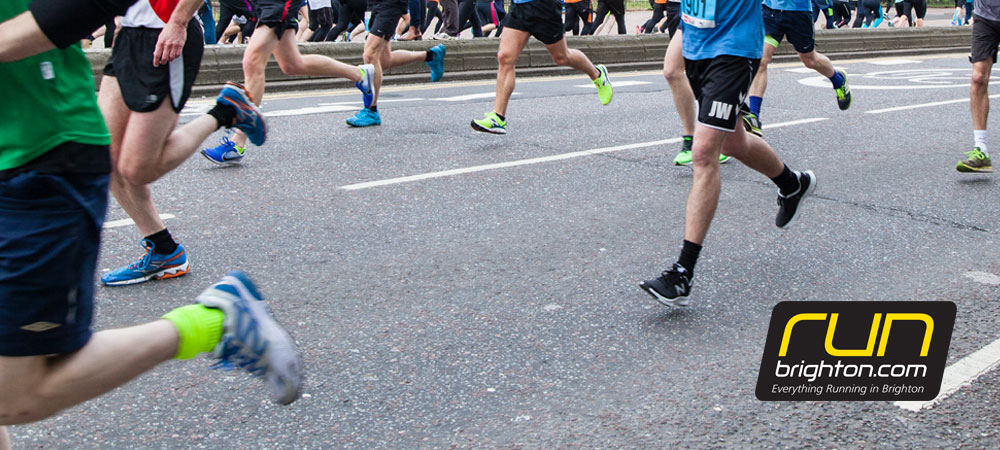Article by BHM
April 27, 2021 at 4:12 pm
Brighton Half Marathon 2021
Tags: Brighton Half Marathon 2021, half marathon training
Speedwork and half marathon training

Mike Bannister, founder of our training partner RunBrighton, explains speedwork and why building in some faster-paced sessions are key to a half-marathon training programme.
While the purpose of the long slow run is predominantly to build endurance, speedwork is done to help you run faster.
Speedwork sessions are typically done during the week.
They are normally done by way of ‘interval’ training. This basically means running hard (faster than your half-marathon pace) for a short period, followed by rest or very easy running for a short period, then repeating this a number of times.
A couple of simple examples include: 12 x 400m (with 1-minute recoveries), or 5 x 1 mile (with 2-minute recoveries).
The shorter the effort (e.g. 400m in the above examples), the faster you should run. The pace of these shorter efforts should be broadly similar to your 5k race pace. (Think of the speed at which you would run parkrun.)
Longer efforts, such as your mile reps, should be at closer to your 10k race pace.
And a further key session is longer, ‘threshold’ efforts. These would still be run faster than half-marathon race pace, but not as fast as your 10k race pace.
This way, we train at different paces and use different energy systems.
The talk test
If you’re relatively new to speedwork, think in terms of a ‘talk test’.
We’ve already mentioned in our previous blog post that the long slow run should be done at a relaxed, conversational pace. When running short efforts of speed (like 400m), you should find it difficult to string more than a few words together, without getting breathless. On the longer efforts, you should just about be able to utter a short sentence, but you shouldn’t be capable of holding a fluid conversation. This is just a rough guide, but will help you if you don’t know what your current 5k / 10k race pace is.
Also, if you’re new to interval training, you wouldn’t begin with the kind of sessions listed above; rather you would gradually build up, over the weeks, to these examples. So, each week, you might increase the number of efforts or the effort duration, for example: 6 x 200m… 8 x 200m… 8 x 300m… 8 x 400m. And you could start with longer recoveries and gradually reduce that recovery time each week.
(Don’t forget, significantly stepping up the volume or intensity of your training will increase the risk of getting injured, so always build up gradually.)
Don’t forget the warm up
As with all training runs, a good warm-up at the start is essential to avoid injury, but this is much more important ahead of speedwork sessions. And be sure to include drills that help activate the big running muscles, such as your glutes.
The sessions listed are a simple overview. However, there are plenty of variations. You could do speedwork sessions that include efforts of varying duration and pace, such as ‘pyramid’ sessions (e.g. 1 min, 2 mins, 3 mins, 4 mins, 5 mins, 4 mins, 3 mins, 2 mins, 1 min).
Above all, make your sessions fun! Whatever speedwork you do, if you don’t currently do any speedwork, this is sure to make you run your half marathon faster.

